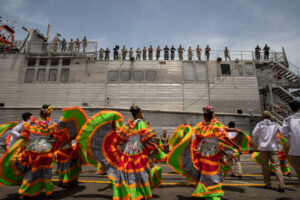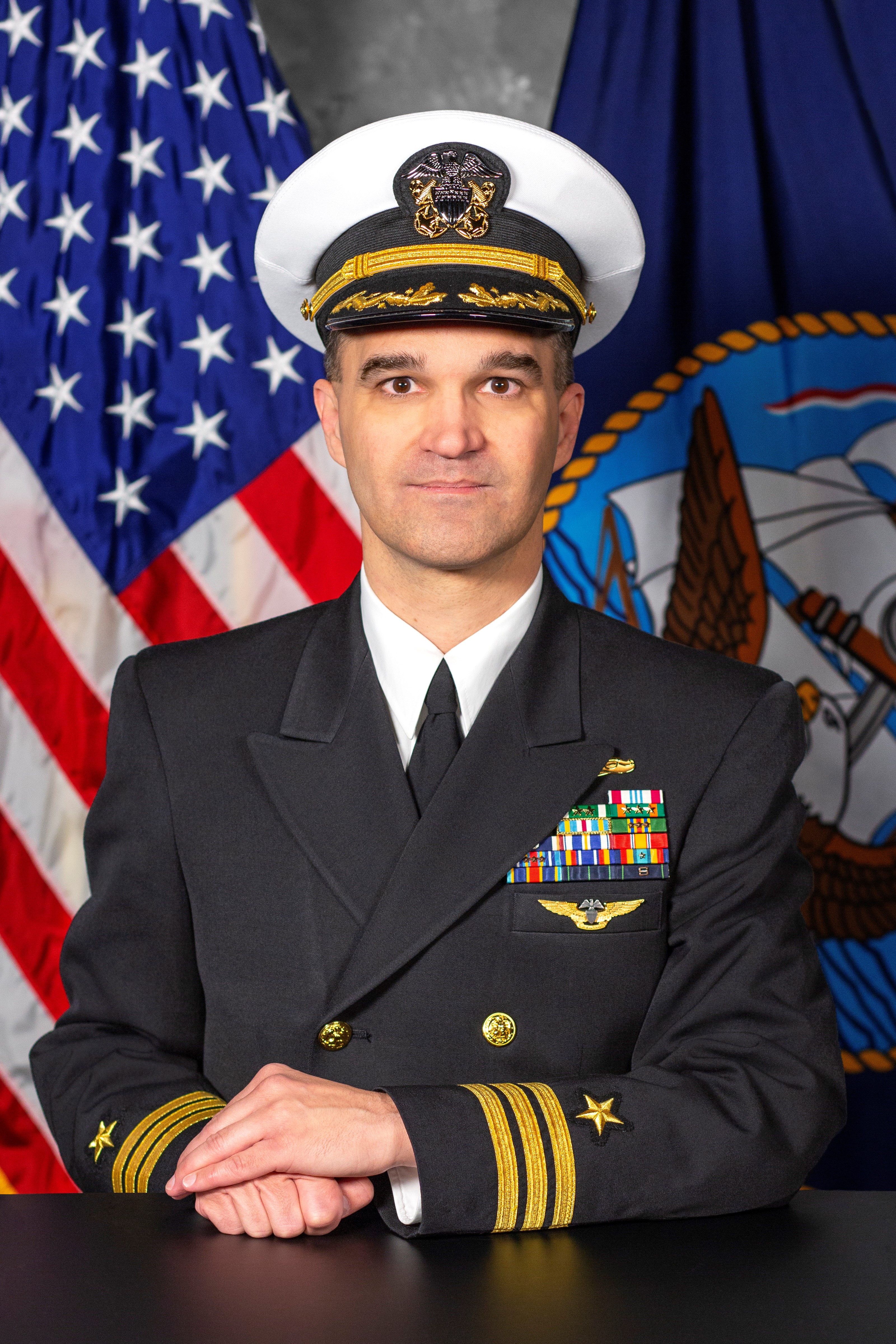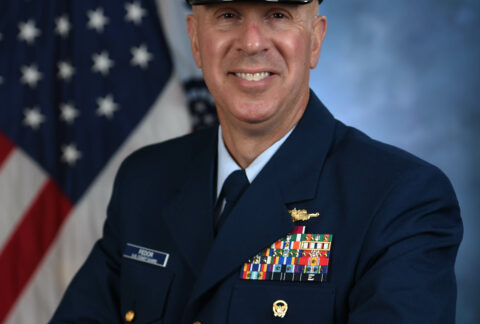U.S. Navy expeditionary fast transport USNS Burlington (T-EPF 10) deployed in August and September to four nations in Latin America and the Caribbean, bringing hope to hundreds of local citizens who, otherwise, would not have access to medical and dental care, among other benefits.
This was made possible thanks to Continuing Promise 2023 (CP23), a U.S. Naval Forces Southern Command/U.S. 4th Fleet mission that this year stopped in Panama, Colombia, Trinidad and Tobago, and Grenada.
Medical teams aboard the Burlington and on site worked alongside, enhancing the combined capabilities of the U.S. Navy and partner nations to respond to public health disasters and humanitarian crises. The mission, which included veterinarians, biomedical equipment technicians (BMET), engineering projects, and the U.S. Fleet Forces Navy Band Detachment, among others, conducted trainings through subject matter exchanges (SMEs), and led seminars on Women, Peace, and Security (WPS).
U.S. Navy Commander Charles Castevens, CP23 mission commander, spoke with Diálogo during the stop in Trinidad and Tobago, about CP’s 13th mission to the region since 2007 and the first involving the Burlington.
Diálogo: Why is it important for the United States to make the USNS Burlington (T-EPF 10) available for humanitarian missions in support of partner nations?
U.S. Navy Commander Charles Castevens, Continuing Promise 2023 mission commander: The USNS Burlington is an Expeditionary Fast Transport (EPF), a shallow draft, all aluminum, commercial-based catamaran capable of regional transport of personnel and cargo. With its shallow draft and own crane and stern ramp, the ship can either moor pier-side or can back up to an undeveloped beach and offload personnel and equipment there.
In the event of a natural disaster, this capability to offload onto an undeveloped site, possibly far from damaged ports and roads of a big city, allows the U.S. Navy to respond faster to the scene of a disaster than using larger ships would. The ship’s smaller size compared to, say, the USNS Comfort (T-AH 20), also allows it to moor at smaller piers in smaller communities than the USNS Comfort can.
The USNS Burlington has no medical treatment capability onboard. Based on the Spearhead class of ships, of which the USNS Burlington belongs, the U.S. Navy plans to build Bethesda-class expeditionary medical ships which will have medical facilities onboard. Outwardly somewhat similar, the Bethesda class ships have operating rooms, acute care, intensive care, and other capabilities, which the Spearhead class ships do not.
By using the USNS Burlington for CP23, both the U.S. Navy and the people of the countries we visit have a greater understanding of the ship’s capability, and type of medical support needed by each country. This information can be used to properly man and equip future Continuing Promise deployments using either expeditionary fast transports or expeditionary medical ships.
Diálogo: What is new in CP23?

Cmdr. Castevens: CP23 is focused on conducting SMEs between U.S. and host nation medical providers. These exchanges enable U.S. medical providers and partner nation medical providers to work alongside each other, learn together, and be better prepared to work together in the future. The exchanges also improve health care on a daily basis, as providers will be more knowledgeable in their fields.
Diálogo: What military personnel make up the crew on board and what kind of capabilities do they have?
Cmdr. Castevens: The crew of the USNS Burlington is made up of civil service mariners who work for the U.S. Navy’s Military Sealift Command (MSC) to operate, navigate, and maintain the ship.
The military personnel onboard have a number of different capabilities. The medical and dental teams assist each participating nation in providing a wide range of health services in local medical facilities. These services include basic medical evaluation and treatment, preventive medicine, dental screenings and treatment, optometry screenings and eyewear distribution, pharmacy services, and public health training.
We also have veterinarians who work with animal handlers in the partner nations, BMET personnel to repair medical and dental equipment, Navy Seabees who conduct small engineering projects, and a U.S. Fleet Forces Navy Band detachment, who will conduct clinics and entertain people at several public performances.
All these teams engage with partner nation personnel with the same skill sets. The engagements play a critical role in strengthening maritime partnerships, improving interoperability, and increasing readiness.
Diálogo: You said that CP23 is an ideal opportunity for “us to make a difference in four partner nations.” Can you please tell me why?
Cmdr. Castevens: Through medical and veterinary engagements, medical and dental equipment repair, SMEs community relationship events, WPS events, and HADR [humanitarian assistance and disaster relief] training at each of the four nations we visit, together we develop a team that is more knowledgeable, resilient, and capable of confronting shared challenges and threats.
This stronger team makes a difference every day through improved medical, dental, and veterinary care in each of the countries. This region is prone to natural disasters, as evidenced by the earthquake that struck Haiti in August 2021, followed by the passing of Tropical Storm Grace over the same region two days later. A magnitude 6.2 earthquake with a magnitude 5.6 aftershock hit Colombia on August 17, 2023, while the USNS Burlington was en route to Colombia. Expanding medical care capabilities and disaster response skills in this region make a difference in each of these countries in the event of a future natural disaster.
Diálogo: How do U.S. military personnel work alongside civilians, federal agencies, and partner nations to provide medical assistance to communities in need?
Cmdr. Castevens: Before we arrive in a country, there are extensive discussions with civilian government, military, and non-federal entities to determine where we are needed. For CP23, medical detachment personnel work alongside host nation personnel in local clinics and hospitals where and when they are needed, as determined by the host nation.
As an example, in rural La Cachaca 3, Riohacha, Colombia, we partnered with numerous Colombian medical providers at a health fair that serves as the primary means of medical assistance for that community. Working alongside Colombian providers, we saw over 800 patients in a single day.
Diálogo: What would you like to highlight about the mission?
Cmdr. Castevens: Though the medical and dental missions have a large impact and high visibility wherever we go, that is not all CP23 offers.
Our veterinary team has performed surgeries or given rabies vaccinations to hundreds of animals.
The Seabees (our construction battalion) refurbished clinics and schools, installing new wiring, ceiling fans, and lighting, and repainting spaces.
The band has entertained or held music clinics for 1,500 people.
The WPS seminars opened minds to possibilities perhaps not previously considered.
The HADR exercises identified gaps in plans, policies, and procedures before a disaster, giving the U.S. and host nations the time to close these gaps and be better prepared for when a disaster comes.
All this work deserves to be highlighted.
Almost every year since 2007, there has been a Continuing Promise mission. By continuing to pursue these missions, which positively impact the people of our partner nations, we continue to show why U.S. Naval Forces Southern Command is the trusted maritime partner in the Caribbean, Central, and South America to improve unity, security, and stability.









